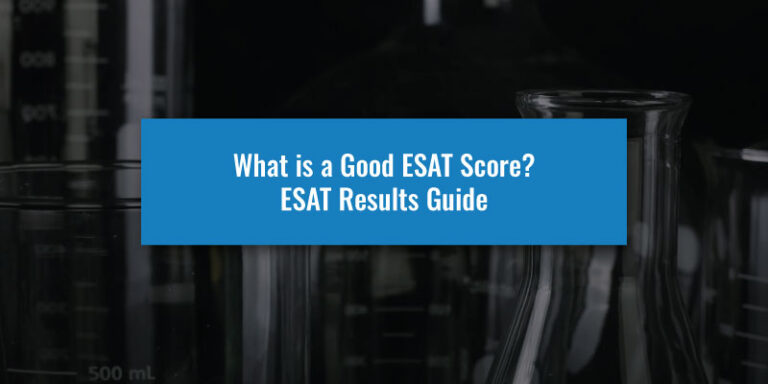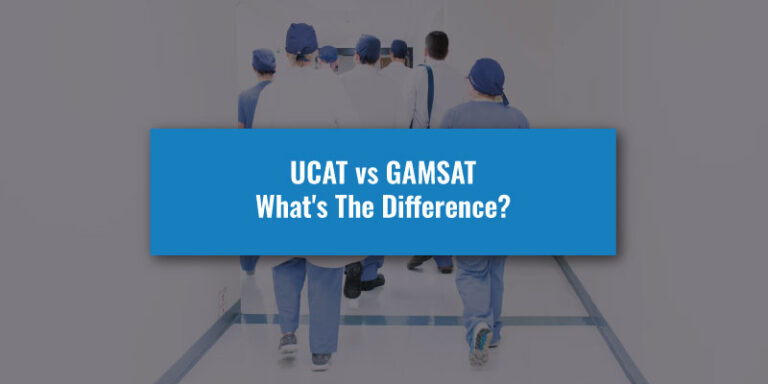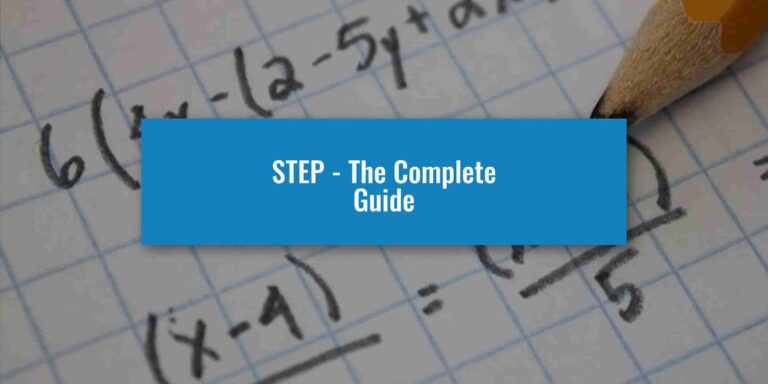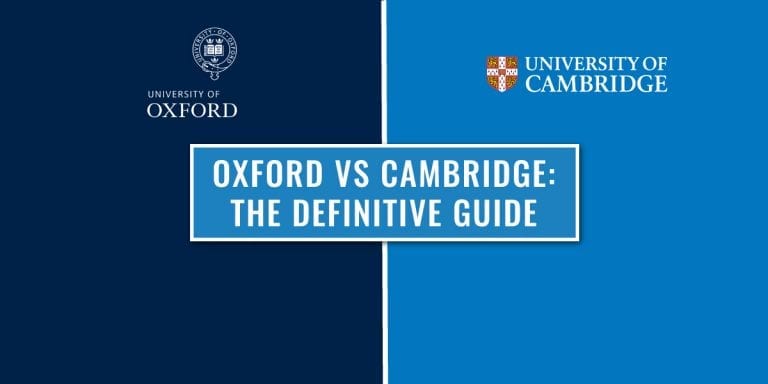The Mathematics Admissions Test (MAT) at Oxford can seem intimidating, as it’s a fairly advanced exam.
It’s a difficult test of your mathematical abilities and it can be hard to understand the place of the test in the overall application process. So, to provide clarity, this guide will explain what the MAT is and its place in the application process.
What Is The Oxford MAT?
The MAT is a test used by the University of Oxford. The MAT is essential for any Oxford applicants applying to a relevant subject, but some other Universities provide it as an option to support your application. Here are the courses that require or accept the MAT as part of the application process:
- (G100) Mathematics (Oxford)
- (GG14) Mathematics and Computer Science (Oxford)
- (GV15) Mathematics and Philosophy (Oxford)
- (GG13) Mathematics and Statistics (Oxford)
- (G400) Computer Science (Oxford)
- (IV15) Computer Science and Philosophy (Oxford)
The test was previously paper-based and operated by Oxford itself. However, in 2023, Oxford gave operational responsibilities to a firm called Tata Consultancy Services. The exam was presented as a hybrid between computer-based and paper-based, but this led to applicants facing severe technical difficulties and a second MAT test being offered.
In 2024, MAT operations were moved again to Pearson VUE, a global computer-testing provider that delivers a wide variety of university admissions tests in the UK. This means that applicants will now need to register for their test using Pearson VUE’s dedicated system and sit their test at specific Pearson VUE testing centres.
What Does The MAT Test?
The MAT is designed to be approachable to students in their fourth term of A-levels and it tests the depth of your mathematical understanding, not the breadth of your knowledge. This means you don’t have to study Further Maths A-level (or equivalent) to be able to score well on the test.
The test is used to help Admissions Tutors to differentiate between candidates when shortlisting for Interviews due to the high A-level predicted grades (or equivalent) and strong GCSE grades of the applicants.
The specification of the test changed in 2018, so past papers before then contain areas that won’t be tested in upcoming year’s Admissions tests. Access all of our MAT past papers here.
Searching for MAT support to strengthen your application?
The MAT is a vital component of your Mathematics and Computer Science application so scoring highly can mean the difference between an offer or rejection. At UniAdmissions, we are experts at boosting your MAT score and maximising your chances of gaining a place.
Discover our MAT Programme by clicking the button below to enrol and triple your chances of success.
What is the test format?
The MAT lasts two and a half hours and consists of 27 questions. Of these questions, the first 25 are multiple choice questions in which you’ll be presented with a problem and 5 answer options.
The last two questions are longer, multiple-part questions where applicants must type their solution on the digital testing platform. These questions are split into multiple sub-questions, each of which provides marks. Applicants are expected to clearly demonstrate their method in order to gain full marks on these questions.
Due to the limitations of the standard computer keyboard, Oxford has stated that applicants won’t need to type complex mathematical expressions beyond what’s possible on the provided computers (letters, numbers, basic operations, etc). It is expected that applicants will receive paper to perform rough working out during the test (you may need to provide your own pencil).
Do I need to take the MAT?
At Oxford, the test is required for any application to study Mathematics, Computer Science, or any joint honours courses, such as Mathematics and Philosophy or Mathematics and Computer Science at undergraduate level. You’ll need to sit it regardless of which college you’re applying to at Oxford.
The MAT is also taken into consideration by other universities in the UK, including Bath and Durham for particular courses.
Can I take the TMUA instead?
No. Although the Test of Mathematics for University Admission (TMUA) is used by a few other universities, it is not required for Oxford. This is the same for the STEP too.
MAT 2024 Format Changes
The format stated above was introduced in 2024 following Oxford’s partnership with Pearson VUE to deliver all of its admissions tests. This format is significantly different from previous years in two ways.
Firstly, the test is now fully computer-based, which has never been the case previously. All previous tests have been paper-based, excluding 2023 which was presented in a hybrid approach and suffered severe technical issues.
Secondly, in 2024, the amount of questions has been altered to focus more on multiple-choice questions. Previously, the MAT contained 6 distinct questions that followed this format:
- Question 1 is multiple choice and contains 10 parts each worth 4 marks. Marks are given solely for the correct answers.
- Questions 2-6 are longer, formula-based questions, each worth 15 marks, and candidates will need to show their working. Part marks are available for the longer questions.
Applicants weren’t required to complete all questions on the paper as some questions were reserved for applicants of specific subjects.
MAT Key Dates
The two most important dates that you need to be aware of for the MAT are the registration and testing dates, which both run over multiple days.
MAT Testing Dates
- 18th June – 19th September – Oxford Admissions Tests Portal registration dates
- 18th August – 26th September 2025 – Test booking dates
- 22nd – 23rd October 2025 – Test dates
(MAT scores for Oxford applicants are sent out automatically to colleges and students can request further feedback from the college they applied to).
When you register for the MAT, you’ll be able to pick either day within the range shown above (provided slots are available and the testing centre is open). What day you take the test doesn’t affect your score, but you should aim to book your test as soon as you can after registrations open, as testing slots can get taken quickly.
How Much Does The MAT Cost?
The MAT doesn’t have any fee attached, so you can sit the test for free.
Access "The Big Book Of Oxbridge Applications" For FREE
Are you considering applying to Oxford or Cambridge? The Big Book of Oxbridge Applications is your must-have resource. Whether you’re exploring colleges, preparing for admissions tests, mastering your UCAS application, crafting a standout Personal Statement, aiming for exam success, or preparing for your interviews, this free book will be invaluable to your preparation. Through over 350 pages, you will find:
- Over 40 admissions test practice questions
- 28 example Oxbridge Personal Statements
- Interviews with Oxbridge students and graduates
- Additional downloadable resources
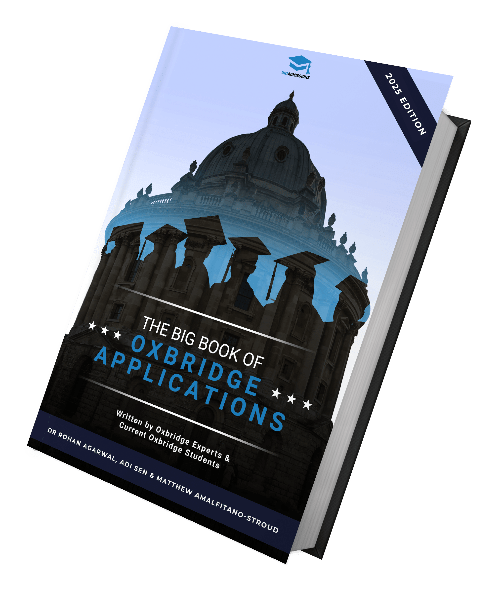
Is the MAT harder than STEP?
As the MAT is based on the A-level syllabus, the STEP is considered to be harder because the MAT doesn’t require as advanced mathematical knowledge. We cover everything you need to know about STEP in our comprehensive STEP Basics guide, so make sure to check it out if you are planning to sit this exam.
However, the MAT is designed to stretch you by applying the concepts you’re familiar with in unusual ways, so if you’re a less creatively inclined mathematician, you may find the MAT harder.
How is the Test Scored?
The current MAT marking scheme is based on the 100 marks available to applicants within the 27 questions of the test. Of these marks, 70 are available within the 25 multiple-choice questions of the test, while 30 are available within the two longer questions at the end of the test.
Your raw marks in questions 1 – 25 are simply based on getting the question right, while marks in questions 26 and 27 are based on both providing the solution and explaining your reasoning and mathematical process. It is important to provide a thorough explanation of your work in these questions as it is required to obtain full marks.
There are no additional score conversions once your marks have been counted, so your final score will be reported either as a score out of 100 or as a percentage. You can learn more about how the MAT is scored and what score you should be aiming for within our MAT Scoring Guide.
How to prepare for the MAT?
Starting Early
Early practice is absolutely crucial to prepping for the test. It might seem silly to start so early but taking a look through MAT questions from early in the year onwards will help familiarise yourself with the style of questions examiners tend to ask. This will allow you to begin thinking logically about the problems they set.
Create A Plan
Make sure you create a revision timetable and strategy, especially when you start early revision. This will help you stay on track with working through the syllabus and working consistently on your revision. Anything to avoid last minute cramming is ideal. If there are topics in the syllabus that you find harder, then make sure you start with these first. Try using a simple colour code (red, amber and green) to rank the topics to help you decide on where to start your revision.
Practice Questions
Our usual advice with Admissions Tests is to complete timed practice exams in exam like conditions. Mock exams like these will prepare you for the actual day. Some candidates taking the MAT are very capable but end up scoring lower than expected because of timing issues. The exam is both a test of ability and, most importantly, your ability to competently answer questions and find solutions to problems in a short space of time.
Maximise your MAT score through effective MAT preparation.
The MAT is a vital component of your Mathematics and Computer Science application so scoring highly can mean the difference between an offer or rejection. At UniAdmissions, we are experts at boosting your MAT score and maximising your chances of gaining a place.
Find out more about our MAT Programme by clicking the button below.
